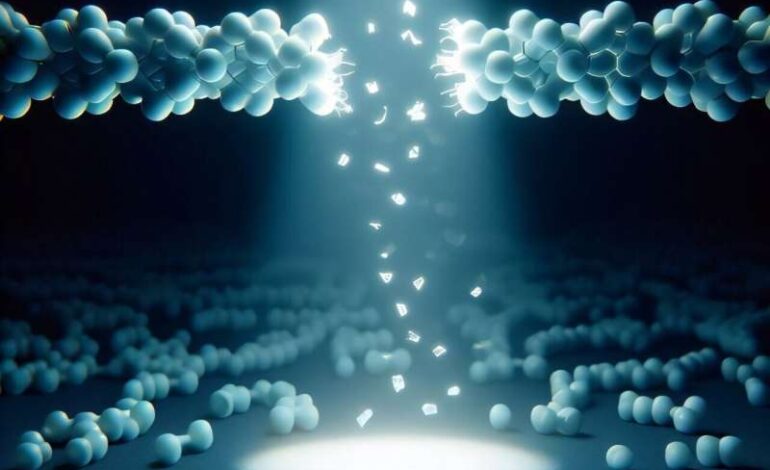Chemists Revolutionize Plastic Recycling with LED Light

Researchers at the Eindhoven University of Technology are pioneering a groundbreaking approach to plastic recycling by harnessing the power of LED light. Assistant Professor Fabian Eisenreich and his team have developed a new class of high-performance plastics that can be created and broken down using light, marking a significant advancement in sustainable chemistry. This innovative method promises to enable truly circular recycling, allowing materials to be reused indefinitely without any degradation in quality.
Breaking New Ground in Sustainable Chemistry
The research, highlighted in the Rising Stars edition of Advanced Materials on August 15, 2025, reflects a shift in how plastic waste can be treated. Eisenreich describes his team as “molecular designers,” focusing on the concept of “design for recycling.” Their aim is to create novel polymers that facilitate advanced recycling strategies while minimizing toxic substances and waste throughout the process.
Traditionally, plastics are made from moldable polymer chains. Current recycling methods, which involve heating and reshaping, lead to a gradual decline in the quality of these chains. As a result, new plastic must eventually be produced, making the existing recycling methods less sustainable. Eisenreich advocates for chemical closed-loop recycling as a superior alternative, where polymers can be broken down into their original components and reassembled without loss of properties.
Innovative Use of Light in Recycling
Eisenreich’s specific research focuses on photochemical recycling, a technique that utilizes LED light to selectively break stable chemical bonds within plastics. He explains that while creating polymers using light is relatively straightforward, the challenge lies in effectively recycling them through the same process. Recently, Eisenreich and Ph.D. candidate Ahsen Sare Yalin achieved a significant milestone by successfully demonstrating this ability in the laboratory.
“We see it as a breakthrough in sustainable chemistry that can reshape the way we deal with plastic waste in the future,”
said Eisenreich. Currently, the designer polymer developed by his team is not suitable for everyday applications; instead, it is intended for specialized uses such as recyclable adhesives that bond effectively to glass and other plastics. Future advancements will aim to expand its applicability beyond niche markets.
Additionally, Eisenreich is exploring the potential of 3D printing recyclable polymers using light, a process that transforms liquid materials into solid forms upon exposure to light. He envisions a future where photochemical recycling could utilize only sunlight as its energy source, a development he describes as “cool.”
This research not only illuminates a new path for plastic recycling but also holds broader implications for the field of sustainable chemistry. Eisenreich emphasizes that their work represents not just a new material, but a comprehensive approach to addressing the challenges posed by plastic waste.
For further details, refer to the work by Ahsen Sare Yalin et al., titled “A Light-Driven Closed-Loop Chemical Recycling System for Polypinacols,” published in Advanced Materials.






